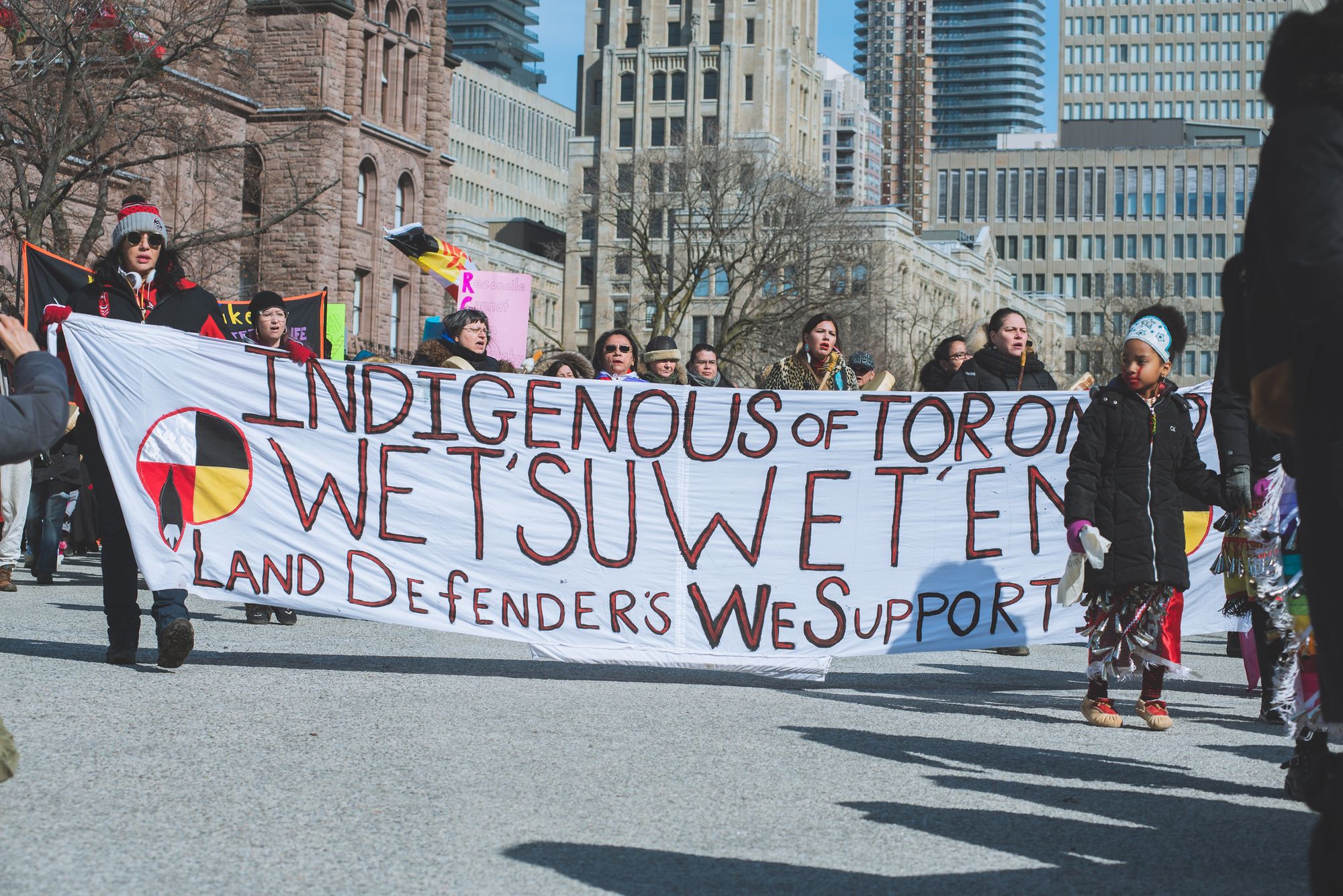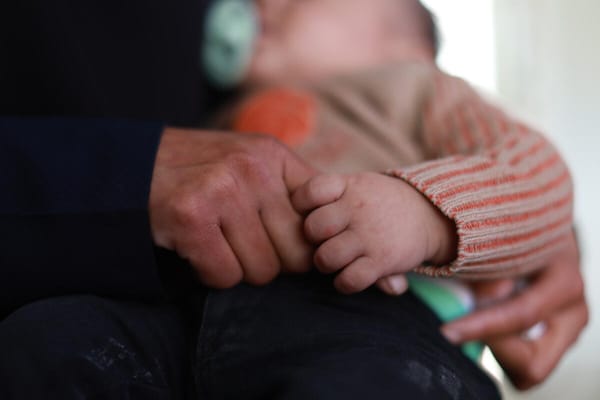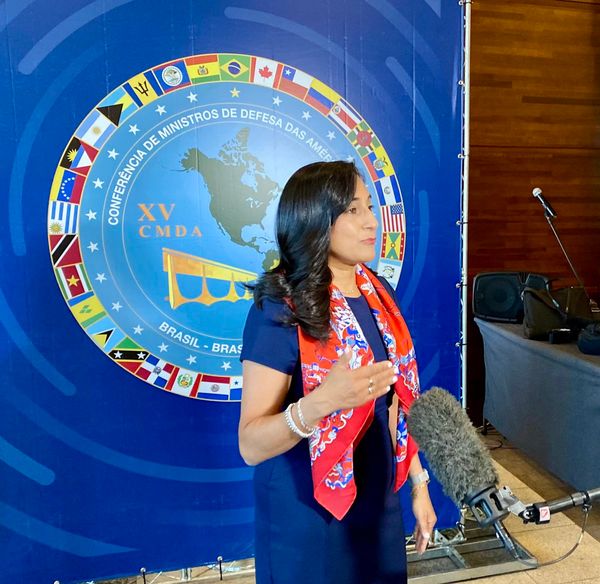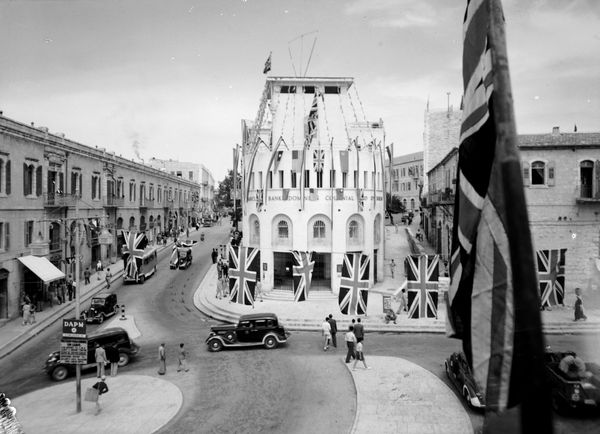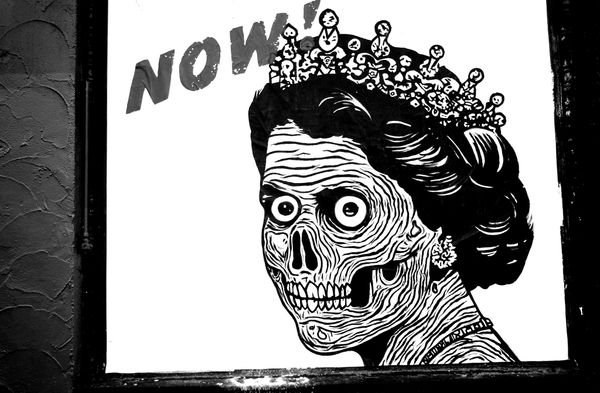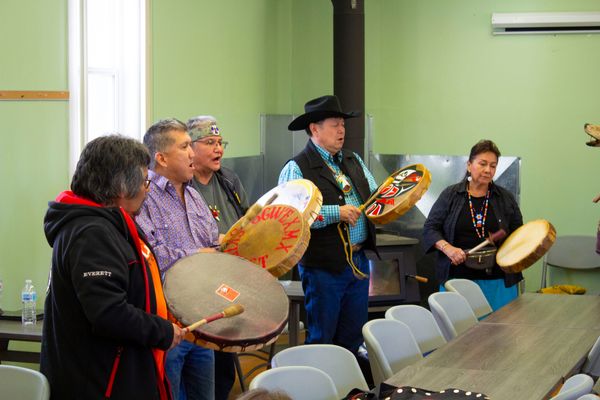In November 2019, British Columbia became the first province in Canada to legislate the United Nations Declaration on the Rights of Indigenous Peoples (UNDRIP) into law, which requires all development projects carried out on Indigenous lands to attain the consent of the communities who reside there. This piece of legislation passed in the house unanimously.
When Prime Minister Justin Trudeau first won a majority government in 2015, he declared that no relationship was more important to him than the one with First Nations, Métis and Inuit, and that it was time for a true “nation-to-nation relationship.”
In spite of the UNDRIP’s passage and Trudeau’s rhetoric, militarily armed and armoured RCMP forces descended on Wet’suwet’en lands in recent weeks, forcibly removing people at the end of gun barrels.
On February 11, Indigenous and settler supporters of the Wet’suwet’en hereditary chiefs blockaded the entrances to the B.C. Legislature building in Victoria. These blockades impeded many from entering and witnessing the throne speech, to be delivered that same day by Premier John Horgan.
Moreover, CN closed its rail network in Eastern Canada, and Via Rail halted most train services nationwide, thanks to the blockades established on rail lines near Belleville, Ont., by Tyendinaga Mohawk demonstrators. And again, just last week, an Indigenous protest blocked all access to the Thousand Islands Bridge, connecting Ontario to New York, in solidarity with the Wet’suwet’en.
These blockades have disrupted travel plans and halted the flow of goods across the country, potentially damaging the Canadian economy. That’s a good thing.
Blockades, both on land and sea, have historically been used as a tactic to disrupt the economic activity of a nation by another nation or group of people. In order for a blockade to be successful, the target of the actions needs to incur material losses.
This last century alone gave us many instances of successful blockades that have been lauded as worth the disruption they caused. The Winnipeg General Strike of 1919 saw the complete shutdown of economic activity in the city for six weeks in response to the appalling social inequality working people faced. While the crackdown on those who participated was harsh, the long-term symbolic impact of the general strike contributed heavily to the expansion of labour rights over the following decades across Canada.
Moreover, the allied blockade of mainland Europe during the First World War caused a severe disruption to the flow of goods to the central powers, a significant contributing factor in the end of a conflict that took the lives of millions.
Blockades work, and are a powerful strategy to be used as a means to achieve your goals. For the Wet’suwet’en and their allies, blockades are a means to fight back against a state that, in this latest instance of colonial violence, places capitalistic greed over the rights of native peoples.
The assertion of Indigenous rights is a constant battle for First Nations, Métis and Inuit peoples. The conflict with the Wet’suwet’en hereditary chiefs is just another manifestation of Canada’s long history of violence against Indigenous peoples over land, stretching back to the time Samuel de Champlain first sailed down the St. Lawrence River.
The Oka Crisis of 1990 is another such expression of Canadian colonialism and Indigenous resilience. The Mohawks of Kanesatà:ke, along with the Mohawks of Kahnawà:ke, halted a development project that would have seen the expansion of a golf course and construction of condos on lands that, historically, were under the traditional custodianship of the Kanien’kehá:ka people. Mohawk warriors barricaded access to the land and were able to bravely keep back Quebec police, RCMP and Canadian military forces. At the peak of this crisis, the Mercier bridge into Montreal was blockaded as well in an effort to force the provincial and federal governments to leave the land alone.
The Oka Crisis, much like what is happening in northern B.C. now, sparked national debates about Indigenous land rights and tactics. But there is indeed much more to it all than the hot takes of pundits on national broadcasts and publications. The lived experiences of violence that Indigenous peoples face every day in asserting the fundamental right to exist needs to be addressed as well.
Anti-Indigenous racism is at the core of this issue. During Oka, mobs of non-natives in Châteauguay, Que., would roam the streets and beat up anyone who looked native. Today, Canadians with prominent followings online are advocating for military violence against any and all blockades while Conservative leadership candidates are praising acts of vigilante violence against blockaders. Politicians may take their time to address these standoffs, but Indigenous people immediately become targets.
Violence against Indigenous peoples doesn’t only occur along the barricades and blockades, as it’s woven into the very fabric of Canadian society. We can’t talk about macro Indigenous issues without also talking about micro ones. When our warriors are on the barricades and standing in the blockades, they aren’t just defending their right to exist on their lands, but also the right for all Indigenous peoples across Turtle Island to live our lives free from oppression.
Indigenous rights and sovereignty have been repeatedly trampled by colonial Canadian governments, and so the assertion of our right to exist requires that drastic disruptive actions, like blockades, be taken. These acts of disobedience are justified after years of abuse and paternalism by colonial governments.
They’re also working.
Trudeau had to cancel his recent trip to the Caribbean to campaign for a seat in the United Nations Security Council in order to return to Canada for a crisis meeting with cabinet ministers. Moreover, an emergency session of the House of Commons convened on February 18 to debate the government’s response to the Wet’suwet’en defiance.
There is great power in collective action, and the blockades that the Wet’suwet’en and their supporters have inspired across this country are testament to that. Images from Vancouver, Victoria, Toronto, Montreal and many other cities across Turtle Island of Indigenous peoples and their allies taking up space are signs of hope to me.
I am reminded of a poem written by Rebecca Thomas, a Mi’kmaw activist and former Halifax Poet Laureate. In 2018, I watched her perform it at a mental health summit in Tkaronto (Toronto). It was a poem dedicated to Canada and its relationship to Indigenous peoples. She concluded it with the phrase, “I promise to hold your hand, if you promise never to let go of mine.”
In this metaphor, Rebecca’s hand symbolizes the hand of Indigenous peoples and how we want to move forward, together, to build toward this fabled dream of reconciliation. To live in a country where our communities are not under boil water advisories, where the child welfare system does not willfully discriminate against First Nations children, where our women, girls and two-spirit siblings are not taken and murdered, and where we do not need to use blockades to stand up for our sovereignty. We can only do that if Canadians hold their hands with ours and meaningfully work with First Nations, Métis and Inuit.
Unfortunately, we can’t do this right now. If Rebecca’s poem were to represent what is happening in Canada, she would be holding out her hand and it would be met with the barrel of a gun.
The RCMP, when considering how to deal with Indigenous acts of defiance, often do not assess the criminality of actions, but instead evaluate the degree of public support protestors can achieve before determining how to respond. This is why it’s imperative that conversations about the Wet’suwet’en defiance cannot cease until Trudeau meets with the hereditary chiefs and the RCMP have completely left their territory.
If you have the time, join one of the many demonstrations taking place across the country. Take up a silent space to help amplify the voices of Inidgenous peoples as they speak truth to colonial power. Call your member of parliament, share your experiences online as a witness to these tremendous displays of Indigenous sovereignty and don’t be afraid to intervene when someone makes racist comments about Indigenous people. True allyship requires that these bare minimum actions, in addition to donating to Unist’ot’en and Gidimt’en, if possible, be taken.
The minor inconveniences brought on by these blockades pale in comparison to the centuries of abuse and pain suffered by Indigenous peoples. The Wet’suwet’en are keeping the tradition of Indigenous resilience alive and strong. Lend your voices to theirs.

